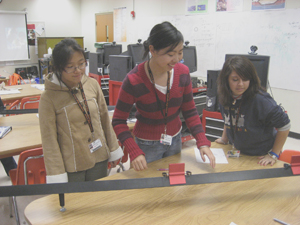The scientific method has 4 steps, 1) formulate a research question, 2) hypothesize how the research question can be answered, 3) design an experiment to test the hypothesis, 4) collect and analyze data 5) draw a conclusion. However, scientific experiment often start with observations and informal experiments (a fancy way of saying playing around).
Eventually, formal experiments are designed and run, but even though the early stages of investigation use the scientific method, often the steps are taken informally or out of order. The process often has a distinct social element as the scientists discuss hypotheses and compare notes.
The twidler's delight investigation is intended to give students an experience with what the early stages of an investigation involve. Have fun but do not modify, disassemble, or in any way harm the twidler's delight. |
 SC Standards
:
SC Standards
: